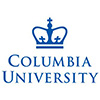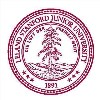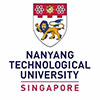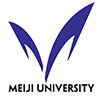沙特桑迪亚国家实验室博士后职位
沙特桑迪亚国家实验室博士后职位
This postdoctoral position is a temporary position for up to one year, which may be renewed at Sandia’s discretion up to five additional years. The PhD must have been conferred within five years prior to employment.
Individuals in postdoctoral positions may bid on regular Sandia positions as internal candidates, and in some cases may be converted to regular career positions during their term if warranted by ongoing operational needs, continuing availability of funds, and satisfactory job performance.
Are you looking to be a member of a high performing team? You can join our team of scientists and researchers and make a difference.
We are seeking a Postdoctoral Appointee to support research related to the understanding and modeling of radiation response of wide band-gap semiconductor materials and devices. In this role, you will collaborate with a multidisciplinary team including internal and external collaborators.
On any given day, you may be called on to:
· Support research programs utilizing the current capabilities of the Ion Beam Laboratory related to understanding and modeling the radiation response of semiconductor materials and devices
· Support development of ground-breaking capabilities to perform high-quality research that impacts Sandia’s broader mission areas
· Collaborate with diverse groups working with a wide array of material deposition techniques, predictive modeling, device fabrication, material testing, and range of other capabilities
· Augment the body of knowledge through publication of research results and presenting at relevant technical conferences
Department Description:
The Radiation-Solid Interaction Department operates the Ion Beam Laboratory at Sandia National Laboratories, which has been a key player in understanding radiation effects in microelectronics since the 1950’s and more recently understanding the materials science of defects in solids. These efforts continue to this day with development of in situ surrogate testing capabilities to experimentally determine the early-time response of microelectronic devices to neutron and gamma environments. This experimental data, coupled with fundamental physics-based defect and carrier models, allows us to predict the radiation response of devices and circuits. Our unique focused ion beam implantation capabilities allow us to explore the fundamental materials science of novel defects in solids down to the fabrication of single atom devices.
Over the last decade, Sandia has improved the understanding of silicon and III-V materials. In the coming years, we need to apply our experiment and modeling expertise to the next generation of Sandia’s radiation-hardened CMOS technologies, maturing materials such as III-nitrides, as well as rapidly emerging materials (e.g. gallium oxide). We offer outstanding experimental and modeling capabilities, a wide range of technologies of interest, and a strong multi-disciplinary team.
Recently, Sandia has directly contributed to the field of proven state defect centers and single atom doping by enabling the deterministic creation of single atom devices within nanostructures including optical cavities for improved photon coupling in wide bandgap materials and electrical structures for low temperature quantum transport studies in Si MOSFET devices.
Our state-of-the-art facility houses 4 major accelerators: a 6 MV Tandem, a 3 MV Pelletron, a 400 kV implanter, and a unique 100 kV nanoImplanter with a 10 nm spot size. Other experimental facilities include micro beam lines on all the major accelerators with spots sizes from 150 nm to 1 um for localized irradiations. Electrical characterization of ion beam induced damage including in-situ deep level transient spectroscopy for defect spectroscopy, in-situ photoluminescence and transient microwave reflectance setups to measure minority carrier lifetimes and a unique mixed radiation environment simulator combining ion and electron irradiations simulating both displacement damage and high dose rate conditions. Optical characterization of light emission from optically active defect centers in diamond, GaN, SiC, etc. using photoluminescence and electroluminescence.
The Ion Beam Laboratory is actively engaged in three major research thrusts:
· Understanding the performance of materials in radiation environments. Among these projects we directly impact the performance of microelectronics in space and other hostile environments.
· Developing and applying novel ion beam techniques to accurately measure materials compositions. Applications in this area include mapping hydrogen isotopes in fusion wall material and measuring the composition of thin complex materials such as transition metal oxides.
· Exploring the materials science of defects in solids. This broad area includes single ion implants for quantum applications in wide bandgap materials, anomalous grain growth in nanograined materials, hydride formation under irradiation, and nanomechanical responses of materials.
In each thrust the department provides outstanding capabilities to multidisciplinary teams with an interest in publishing high quality research and applying the results to problems of national interest.
About Sandia:
Sandia National Laboratories is the nation’s premier science and engineering lab for national security and technology innovation, with teams of specialists focused on cutting-edge work in a broad array of areas. Some of the main reasons we love our jobs:
· Challenging work with amazing impact that contributes to security, peace, and freedom worldwide
· Extraordinary co-workers
· Some of the best tools, equipment, and research facilities in the world
· Career advancement and enrichment opportunities
· Flexible schedules, generous vacations, strong medical and other benefits, competitive 401k, learning opportunities, relocation assistance and amenities aimed at creating a solid work/life balance*
World-changing technologies. Life-changing careers. Learn more about Sandia at: http://www.sandia.gov
*These benefits vary by job classification.
EEO Statement:
All qualified applicants will receive consideration for employment without regard to race, color, religion, sex, sexual orientation, gender identity, national origin, disability, or veteran status.
Required:
· You have, or are pursuing, a PhD in experimental physics, electrical engineering, semiconductor material science, or related area, and possess a bachelor’s in science, technology, engineering or mathematics (STEM)
· Research background with semiconductor devices and device physics
· Good communication skills as evidenced by a history of publication of results in peer-reviewed journals and external presentations at appropriate scientific conferences
Desired:
· Experience with defects in semiconductors, semiconductor device physics, and/or TCAD modeling of devices
· Experience with experimental semiconductor device physics including simple fabrication, electrical measurements, and expertise in the study of radiation effects in electronics
· Experience with keV to MeV energy ion beam accelerators and electron beam systems

















